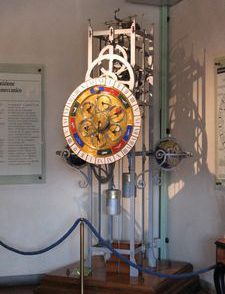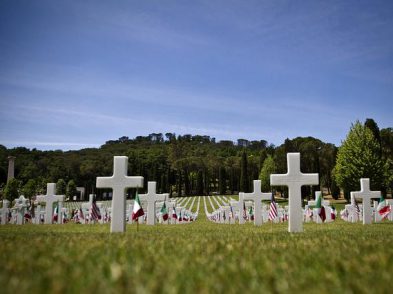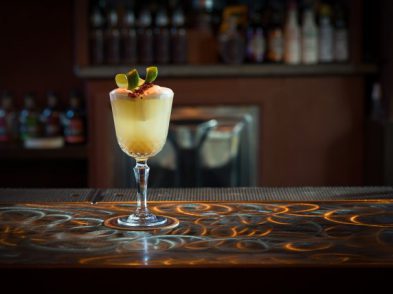It was 1890. And the whole city flocked to see their show. The scene the Florentines liked the most, according to the reporter for La Nazione, was the attack on the Deadwood Stage by the Indians. For awhile, it seemed as if the ‘Redskins’ would prevail, but then the cavalry arrived in the nick of time—‘arrivano i nostri!’—and the Indians were ‘invariably defeated’.
The Deadwood Stage? Cowboys, Indians…the cavalry? In Florence, Italy? Surprising, but yes, ‘Buffalo Bill’s Wild West’ visited Florence twice: in the spring of 1890 and again in April 1906. The first time, the troupe camped at la Zecca, on the banks of the Arno; the second, at Campo di Marte. The troupe in 1890 numbered about 600 men and women, including about one hundred Indians; there were also about 160 horses, 10 or 15 buffalo, and various elk, deer and bears. The notice for the 1906 visit claimed that the troupe numbered ‘1300 UominiCavalli’.
William F. Cody, better known as Buffalo Bill, organized his ‘Wild West’ show in 1883, when he was 37 years old, and the show ran until 1916, a year before his death. While the acts were constantly changing, it always consisted of races, demonstrations of marksmanship, stunt riding, military maneuvers, and tableaux depicting scenes from the American West. Indians, so critical to the success of the show, appeared in many of the acts, including such popular tableaux as ‘The Buffalo Hunt’, ‘The Attack on the Deadwood Stage’, and ‘The Attack on the Settler’s Cabin’. In addition to Buffalo Bill, the other star performers were the sharpshooters, Johnny Baker and Annie Oakley, both of whom came to Florence, and many famous Indians, including Black Elk, Luther Standing Bear, and Red Shirt. The La Nazione reproduces the famous photo of Bill and ‘Toro Seduto’, though Sitting Bull toured with the company for only one season, in 1885, and never came to Florence.
Nothing today could match the popularity of ‘Buffalo Bill’s Wild West’ in the late 1800s, especially in Europe. During its 1887 tour, Queen Victoria came out of mourning to see the show twice; during another performance of 1887, Buffalo Bill wildly drove the Deadwood Stage around Earl’s Court; beside him riding shotgun was the Prince of Wales and inside the coach rode four reigning kings of Europe. In 1890, in Rome, Buffalo Bill was granted an audience with Pope Leo XIII and was presented to King Vittorio Emanuele III. And during the tour of 1891, Annie Oakley shot a cigarette out of the mouth of Kaiser Wilhelm (and later quipped that he was just the kind of man who would start a war).
When the troupe came to Florence for three days in April 1906, it arrived at the station of Campo di Marte in four trains, composed of 50 cars, and set up its encampment in the nearby fields. Ten thousand spectators, rich and poor, flocked to the show each day, blocking the streets in the area with wagons, bicycles, and even a few automobiles: ‘It’s impossible to give an idea of the show’s grandeur’, the reporter for La Nazione exclaims. He recounts Buffalo Bill’s early days as a scout, his horsemanship, his killing 4,280 buffalo in 18 months, and his shooting skills—that he can hit a dollar at 30 meters—and proclaims that he is the very embodiment of the American West. He describes Annie Oakley as la formidabile tiratrice, the formidable sharpshooter.
La Nazione’s real interest, though, lay with the Indians. The Indians, though, were the real attraction. Italians, like other Europeans, were curious about Indians, from the time of the conquest of the New World. Their curiosity peaked during the 19th century, when competing entrepreneurs brought Indians and other exotic groups to Europe for extended tours. Buffalo Bill brought with him mainly Sioux whom he recruited off the reservations (and for whom he put up a bond), with the result that the predominant image of the Indian in Europe and in America was that of the Sioux. Florentines were fascinated by the brightly colored clothing of the handsome braves, their long hair, their feathered headdresses, and their war paint; they ‘shivered’ when they heard their war cries. As Florentines wandered through the encampment, they crowded around the Indians, especially the squaws and their papoose, touching them and attempting to talk with them. ‘Buffalo Bill’s Wild West’, they were led to believe, was an accurate picture of the American West.
Of course it wasn’t. Florentines 100 years ago, like all of us, might have wished for it to be true, but knew that the ‘Wild West’ was little more than a dazzling entertainment. At one point, the reporter for La Nazione urges his readers, especially students of natural history, to visit Campo di Marte to see the Indians. Their race, he says, will soon disappear as white men have taken their lands and killed off their buffalo. We can only shake our heads in astonishment that the curiosity and pleasure felt by those who watched the ‘Wild West’, on both sides of the Atlantic, was founded upon the subjugation, even the near extermination, of another human being—that lone Indian in war paint, galloping around the ring before a cheering crowd.





